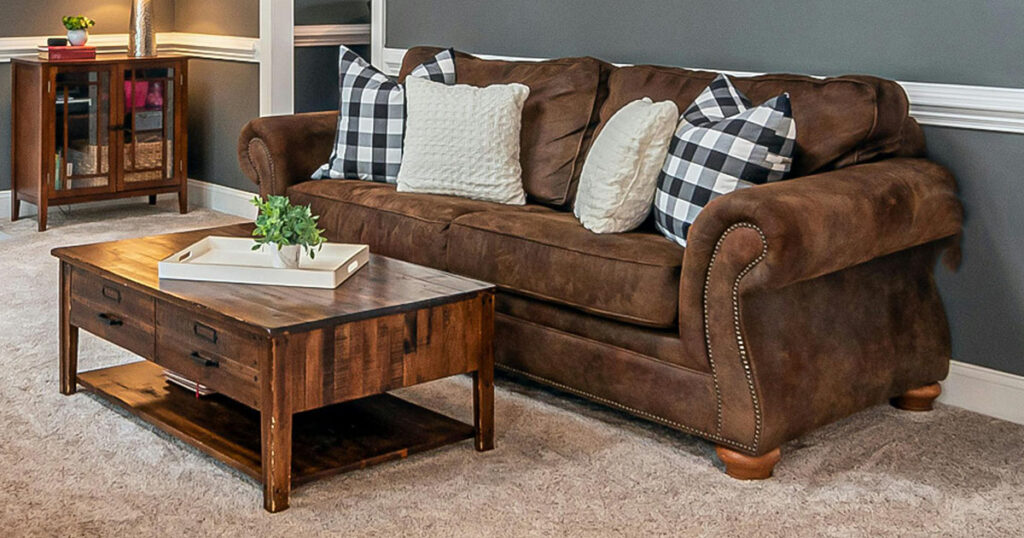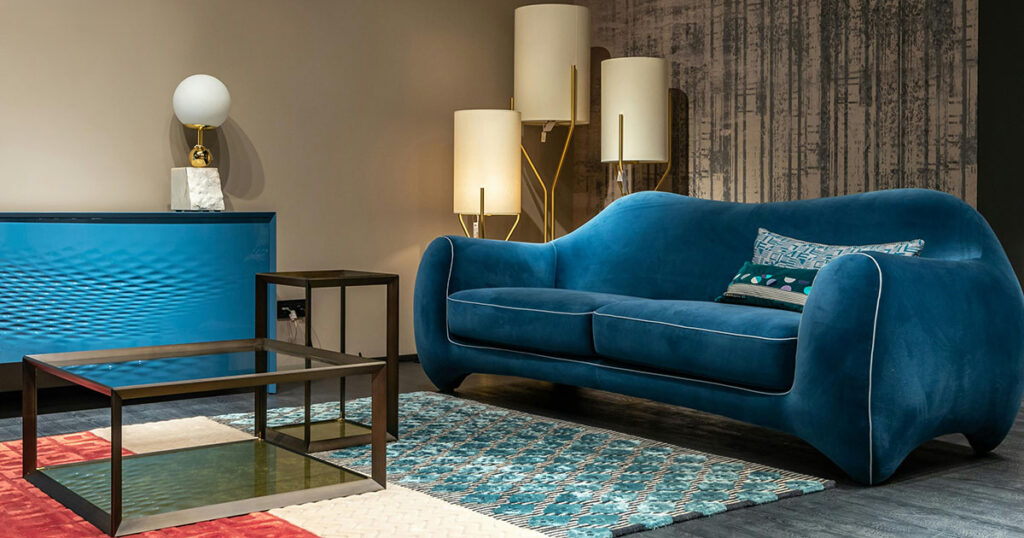Selecting the right rug for a traditional interior can transform your space from simply nice to truly exceptional.
A well-chosen rug doesn’t just protect your floors—it anchors furniture, adds warmth, and ties design elements together in perfect harmony.
In this guide, I’ll walk you through everything you need to know about selecting rugs that complement traditional interiors, whether for your home or a commercial space.
What Defines Traditional Interior Design?
Traditional interior design draws inspiration from European styles of the 18th and 19th centuries. This timeless approach balances sophistication with comfort, creating spaces that feel elegant and inviting without being overly ornate.
Key Features of Traditional Interiors
Before selecting a rug, it’s important to understand what makes a space traditionally styled:
Symmetry and Balance: Traditional rooms feature balanced layouts, often with matching furniture pieces facing each other to create a formal, harmonious feel.
Architectural Details: Look for crown moldings, wainscoting, wood paneling, and sometimes coffered ceilings or arched doorways that add craftsmanship.
Classic Furnishings: Substantial, elegant furniture pieces that are often antique or antique-inspired, including carved wood pieces and upholstered seating with curved lines.
Rich Textiles: Layered fabrics like thick drapery panels with sheers, valances, and tailored upholstery in materials such as velvet, silk, and damask.
Dark Wood and Warm Finishes: Deep mahogany, walnut, or cherry woods for flooring and furniture, often with touches of brass or gold in lighting and hardware.
Colorful Accents on Neutral Backgrounds: Neutral paint colors (ivory, beige, cream) with controlled pops of color in art, pillows, drapery, and rugs.
Pattern and Detail: Masterful patterns like plaids, damasks, florals, and stripes repeated throughout the space.
Color Selection for Traditional Rugs
The right rug color can make or break your traditional interior. Here’s how to choose colors that harmonize perfectly:
Common Color Palettes in Traditional Interiors
Traditional spaces typically feature:
- Neutral Bases: Beige, ivory, taupe, cream, or gray provide classic backdrops.
- Earthy and Nature-Inspired Tones: Warm browns, soft tans, terracotta, sage greens, muted olive, and rusty reds create a cozy, inviting mood.
- Soft Pastels: Pale pink, powder blue, or soft lavender add a gentle touch in bedrooms or feminine spaces.
- Whites and Creams: Used for ceilings, trim, and some furniture to make spaces feel light yet warm.
- Jewel Tones: Rich burgundy, emerald green, sapphire blue, navy, and golden yellow add depth and luxury as accent colors.
Rug Colors
When selecting your rug color:
Echo or Complement Room Accent Colors: Look at colors already present in drapery, cushions, and artwork. Your rug can either reinforce these colors or introduce complementary hues.
Consider Rich, Classic Hues: Traditional rugs often feature vibrant colors like ruby red, navy blue, or forest green, which pair beautifully with dark wooden furniture.
Use Neutral or Muted Rugs for Balance: If your room already has bold patterns or colors, a subdued rug in ivory, pale blue, or soft sage can prevent visual overwhelm.
Choose Timeless Color Combinations: Classic Oriental rug palettes (deep red/navy/ivory or sage/rose/ivory) have proven their staying power. Multi-color rugs are also forgiving as they contain several hues you can pull from for other accents.
Rug Patterns and Motifs
Pattern is a hallmark of traditional interiors. Here are rug patterns that will reinforce your traditional style:
Oriental and Persian Motifs
Persian or Oriental rugs with intricate medallions, floral vines, scrolls, and geometric borders have been staples of traditional decor for centuries. Classic Persian patterns (Tabriz, Kashan, Heriz, Isfahan) often feature a central medallion or an all-over floral lattice surrounded by decorative borders.
Floral and Foliage Designs
Beyond authentic Persian rugs, any rug with elegant floral patterns will suit a traditional setting. Look for damask motifs, vine and leaf patterns, acanthus or palmette designs, and other botanical themes. Needlepoint rugs or Aubusson rugs with bouquets of roses, garlands, and ornate scrollwork add European grandeur.
Stripes, Plaids, and Trellis Patterns
Some traditional spaces incorporate stripes or plaids. A muted Regency stripe or a tartan plaid carpet can evoke a classic library or study. Lattice or trellis patterns add structure and can subtly echo architectural elements.
Medallions and Borders
Many traditional rugs feature a central medallion layout with a decorative border around the edges. This format works well in rooms where you might see the center of the rug, creating a focal point on the floor. The border adds a frame that complements framed art, trimmed walls, and bordered draperies.
Rug Shapes and Placement
The shape and placement of your rug can dramatically affect how it functions in your traditional interior:
Living Rooms
In living areas, a rectangular rug should ground the main seating arrangement. Choose a rug large enough that at least the front legs of sofas and chairs sit on it. Center the rug in the seating area to maintain symmetry and balance.
Dining Rooms
Your dining room rug should be big enough that chairs remain fully on the rug even when pulled out (add approximately 24 inches of extra rug on each side beyond the table edge). A rectangular rug works well under a rectangular table, while a round rug can complement a round table.
Bedrooms
In traditional bedrooms, place a large area rug under the bed, extending about 18-24 inches beyond each side and at the foot. This ensures your feet land on the rug when getting out of bed. Alternatively, place runners or accent rugs alongside the bed.
Entryways and Hallways
Use runner rugs in hallways and decorative rugs in entry foyers. A runner should cover a generous portion of the hallway length but leave a margin on all sides. In an entry foyer, the rug shape might depend on the layout—a rectangular rug works in most cases, but a round rug can beautifully echo a circular foyer layout.
Scale and Proportion
Getting the size right is crucial for a polished traditional interior:
Aim for a Generous Size
One of the most common decorating mistakes is choosing a rug that’s too small. Your rug should be large enough to anchor the main furniture. In a living room, choose an 8’x10′ or larger so that furniture overlaps onto the rug rather than a 5’x8′ that floats in front.
Leave an Even Border of Floor Visible
In traditional settings, show some of the hardwood or stone floor around the edges of the room. Leave about 8-18 inches of bare floor as a border around the rug, with the space on each side being equal for balance.
Coordinate with Room and Furniture Dimensions
Consider the scale of your furniture and room when picking rug size. A grand room with high ceilings needs a large rug, while a small study might only need a 5’x7′. Center the rug within the room or seating area for balance.
Rug Borders and Edging in Traditional Aesthetics
Borders and edgings contribute significantly to traditional appeal:
Decorative Borders as a Design Feature
Most classic rugs have a distinct border pattern framing the central field, acting like a frame for the rug. This border provides a finished, tailored look that complements the room’s sense of order. Colors from the rug’s border are often picked up elsewhere in the decor, creating deliberate harmony.
Scale of Borders
Pay attention to the width of the rug’s border relative to its size. A well-proportioned border (often around 1/6 to 1/4 the width of the whole rug) looks best. The border pattern itself can introduce a second motif for added interest.
Fringe and Edging Details
Traditional hand-knotted rugs often have fringe on the ends, adding old-world, handcrafted character. In high-traffic areas, you might opt for rugs without fringe or with a bound edge for durability and safety.
Coordinating Rugs with Other Elements
A rug doesn’t exist in isolation—it’s part of a larger ensemble:
Unify with Color
Identify a key color from your rug and repeat it elsewhere in the room, or vice versa. Traditional interiors often follow a 60-30-10 rule in color distribution (60% dominant color, 30% secondary, 10% accent). Your rug can support any of these color levels.
Mix Patterns with Intention
If your rug has a busy pattern, consider choosing drapery or upholstery with a more subdued or larger-scale pattern. Vary the pattern scale and types—a floral rug can look wonderful with striped curtains if a color ties them together.
Use Samples and Swatches
When coordinating a rug with other textiles and wall treatments, see them together before deciding. Get samples of the rug, curtain fabric, upholstery fabric, and paint swatches, then lay them out in the room to see the overall effect.
Match Formality and Style
Consider the style and formality of all elements. If you have opulent brocade curtains and a formal wallpaper, a casual jute rug would look out of place—instead, choose a classic patterned wool rug that aligns with the formality.
Design Principles: Balance, Layering, and Contrast
Follow these design principles to integrate your rug successfully:
Balance and Symmetry
Traditional interiors prize balance—center your rug in the room or in relation to a focal point so both sides mirror each other. Ensure other elements on each side of the room relate to create equilibrium.
Layering
Traditional interiors are inherently layered. Your rug is one layer in the design, with furniture, art, and window treatments adding more layers. Create visual richness through these layers while maintaining harmony.
Contrast
While traditional rooms often have harmonious schemes, contrast adds interest. Your rug can introduce contrast in color (light vs. dark), pattern (busy vs. plain), or texture (smooth vs. rough) to create focal points and prevent the design from feeling flat.
Traditional Rugs in Commercial vs. Residential Settings
Rugs serve different purposes in commercial and residential traditional interiors:
Commercial Spaces (Law Offices, Hotels, Heritage Buildings)
In professional settings, traditional rugs convey prestige, trustworthiness, and connection to tradition. Oriental rugs are common in high-end offices, instantly elevating the gravitas of the room. Consider durability and maintenance needs for these high-traffic spaces.
Residential Settings
In homes, traditional rugs add comfort and personal expression.
Living rooms might showcase a fine hand-knotted Oriental rug as a centerpiece, while dining rooms benefit from forgiving patterns that hide occasional spills.
Bedrooms call for softness underfoot, with wool being an excellent choice.
Customization Options
Sometimes, the perfect rug requires customization:
Custom Colors
Many manufacturers can recolor an existing design using your chosen yarn colors to match your interior perfectly.
Custom Sizes and Shapes
Order a rug to exact dimensions to fit your space perfectly, or create custom shapes for unique areas like bay windows or curved spaces.
Pattern Adjustments
Adjust patterns by mixing and matching elements from different designs, scaling patterns up or down, or even adding personal touches like monograms for a truly unique traditional look.
Conclusion
A well-chosen rug doesn’t just cover your floor—it anchors your space, adds warmth and character, and ties together your traditional design with elegance and purpose.
By following these guidelines, even beginners can approach rug selection with confidence, creating spaces that exude timeless traditional charm and personal comfort.




